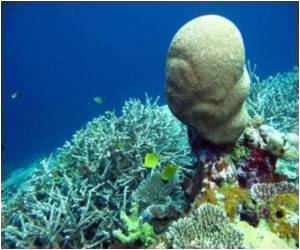Seagrass ecosystems possess the level of carbon per hectare just as much as the world's forests and they are now among its most endangered systems, claims new study.

With seagrass meadows disappearing at an annual rate of about 1.5 percent, 299 million tonnes of carbon is also released back into the environment each year.
Piecing together old and new data from 946 seagrass meadows around the world, an international team of researchers estimated that seagrass captures 27.4 million tonnes of carbon each year, burying it below in the soil.
Unlike forests that hold carbon for about 60 years then release it again, seagrass ecosystems have been capturing and storing carbon since the last ice age.
This means that up to 19.9 billion tonnes of carbon is currently stored within seagrass plants and the top metre of soil beneath them - more than twice the Earth's global emissions from fossil fuels in 2010.
If the seagrass dies, all of that could be released into the environment, says marine ecologist and study author James Fourqurean from Florida International University in Miami, US.
Advertisement
"It would put us very much into the extreme of greenhouse situations very very quickly," he said.
Source-ANI









